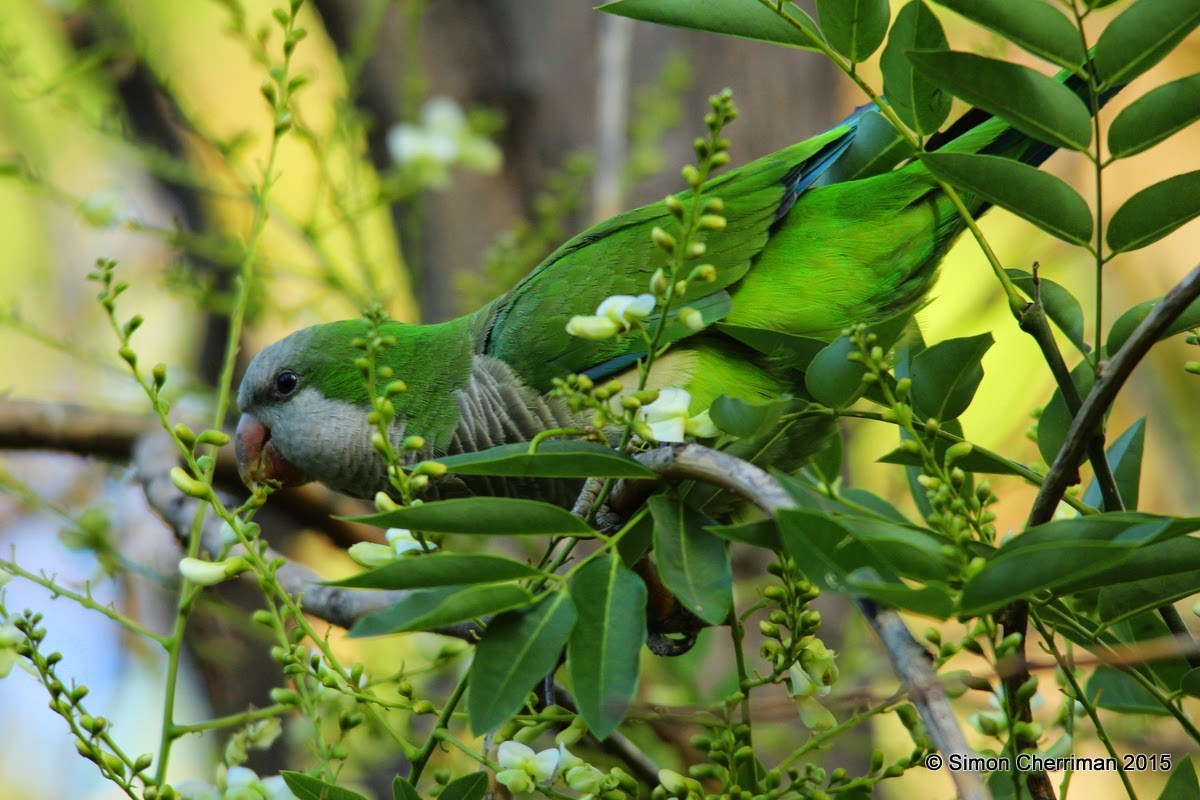Being over 2 m tall has many advantages, but folding yourself up to sit in the time machine that is a commercial aircraft for more than 12 hours certainly isn´t one of them! After a long and arduous flight I finally arrived in Chile, a country I have long wanted to visit since meeting some wonderful people who became close friends of mine while studying in New Zealand 5 years ago, on Saturday. It was brilliant to be collected by my friend Jaime and be shown around Santiago for the first time. There are many things to write about, but for these blog posts I will focus on (surprise, surprise!), BIRDS!! I hope I will be able to add pictures of the different species I see as I go, and share with you some of the new discoveries I make while travelling.
The first bird I laid eyes on was a pretty looking parrot, known locally as ´Corro Argentina´, or the Monk Parakeet (Myiopsitta monachus). This species is initally beautiful to observe, but when you learn they are an invasive bird responsible for the ousting of many endemic and now endangered species of Chilean parrot, their bright appearance loses its gloss quite considerably. I instantly thought how amazing it was to learn of an ecological equivalent to the feral Rainbow Lorikeet (Trichoglossus moluccanus) which is having a virtually identical impact to local native parrots in the south-west of Western Australia. Here are a couple of photos of the Corro Argentina that I took close to the centre of Santiago, where they can be observed easily.
 |
| Badness beneath beauty: Monk Parakeets have displaced native parrot species in Chile. |
Let´s move on to a very common species which is much more widespead, and although also associated with negativity, this bird is generally pretty harmless to other speices. As you might expect, the most well known bird of the city is a Feral Pigeon, one of the most common and widespread birds in the world! Even though they are often described as ´rats of the sky´, they are still beautiful when viewed in the pretty sunlight.
One of the first birds whose Spanish name I learned is this fella, a ´Zorzal´.
 |
| The male (´macho´) Zorzal has a dark head which contrasts vividly with the yellow beak. The female (´hembra)´s head is pale. |



No comments:
Post a Comment